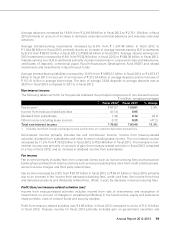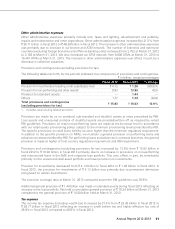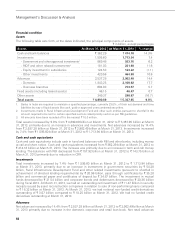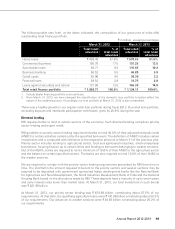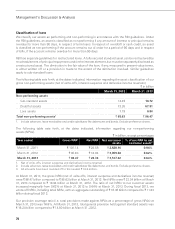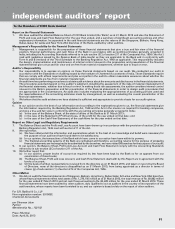ICICI Bank 2013 Annual Report Download - page 69
Download and view the complete annual report
Please find page 69 of the 2013 ICICI Bank annual report below. You can navigate through the pages in the report by either clicking on the pages listed below, or by using the keyword search tool below to find specific information within the annual report.
Annual Report 2012-2013 67
of extreme but plausible scenarios on our risk profile and capital position. Based on our Board-approved
stress testing framework, we conduct stress tests on our various portfolios and assess the impact on our
capital ratios and the adequacy of capital buffers for current and future periods. We periodically assess and
refine our stress tests in an effort to ensure that the stress scenarios capture material risks as well as reflect
possible extreme market moves that could arise as a result of market conditions. The business and capital
plans and the stress testing results of the group entities are integrated into the internal capital adequacy
assessment process.
Based on the internal capital adequacy assessment process, we determine the level of capital that needs
to be maintained by considering the following in an integrated manner:
• strategic focus, business plan and growth objectives;
• regulatory capital requirements as per the RBI guidelines;
• assessment of material risks and impact of stress testing;
• perception of credit rating agencies, shareholders and investors;
• future strategy with regard to investments or divestments in subsidiaries; and
• evaluation of options to raise capital from domestic and overseas markets, as permitted by RBI from
time to time.
Basel III
In order to strengthen the resilience of the banking sector to potential future shocks, together with
ensuring adequate liquidity in the banking system, the Basel Committee on Banking Supervision issued
the Basel III proposals in fiscal 2010. Following a consultation phase on these proposals, the final set of
Basel III rules were issued in fiscal 2011. The Basel III rules on capital consist of measures on improving
the quality, consistency and transparency of capital, enhancing risk coverage, introducing a supplementary
leverage ratio, reducing pro-cyclicality and promoting countercyclical buffers, and addressing systemic
risk and interconnectedness.
During fiscal 2013, RBI issued the final guidelines on the Basel III capital regulations. The implementation
of this framework would commence from April 1, 2013 in a phased manner through till March 31, 2018.
In May 2012, RBI lowered the minimum leverage ratio requirement from 5.0% to 4.5%.
In January 2013, RBI issued the draft guidelines on the composition of capital disclosure requirements,
in addition to the existing Pillar 3 guidance. Along with this, RBI prescribed different treatments for
capitalisation of bank’s exposures to qualifying and non qualifying central counter-parties on account of
derivatives and securities financing transactions.
RBI, through its circular in March 2013, deferred the introduction of credit value adjustment risk capital
charge for over the counter derivatives. Credit value adjustment captures risk of mark-to-market losses
due to deterioration in the credit worthiness of counterparty. Credit value adjustment risk capital charges
would become effective from January 1, 2014.
We continue to monitor further developments and believe that our current robust capital adequacy
position and demonstrated track record of access to domestic and overseas markets for capital raising
will enable us to adapt to the Basel III framework.




